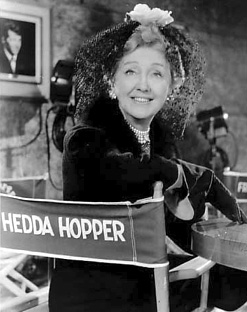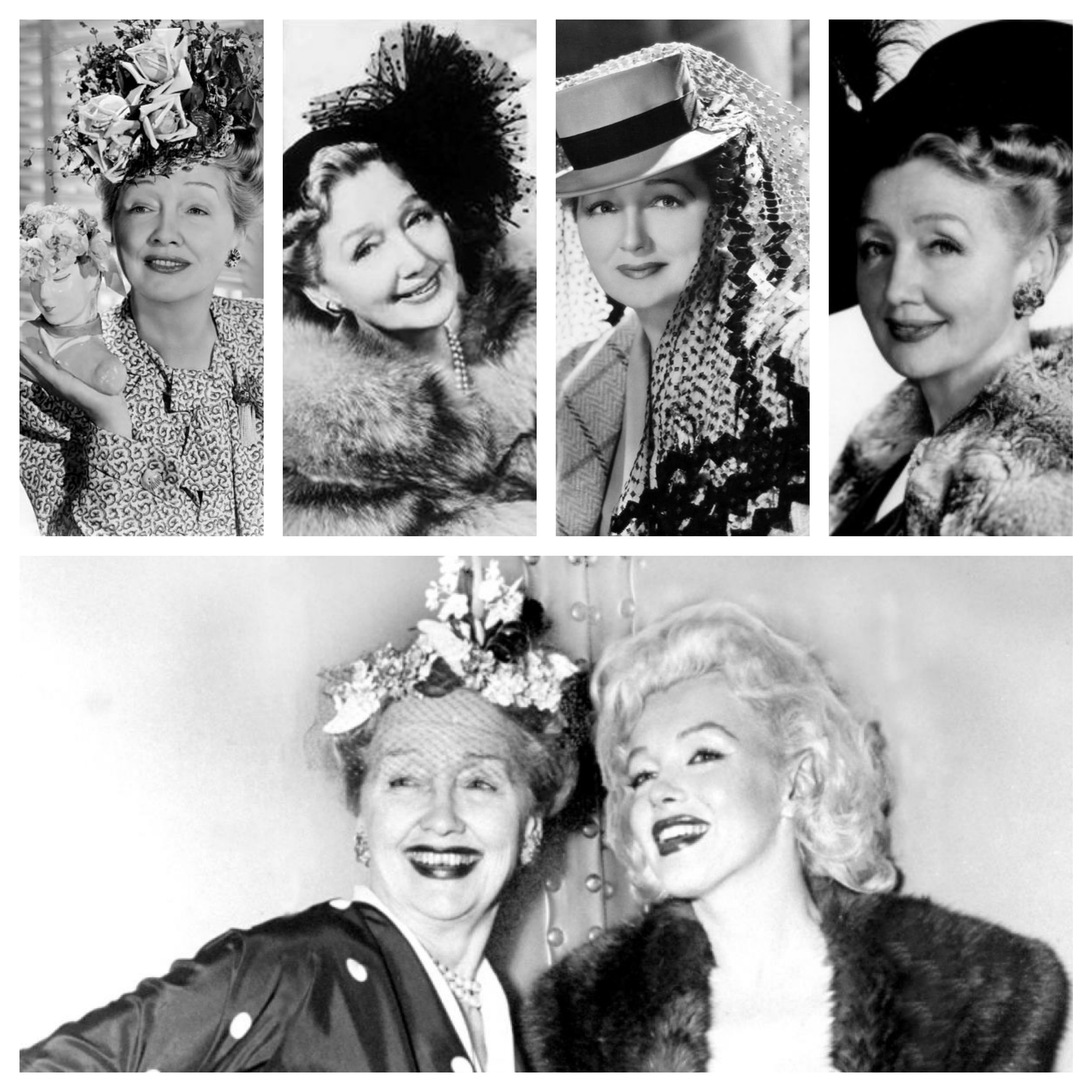
- Fashion
A Reporter’s Style: The Unique Hedda Hopper, Gossip Queen of Hollywood
Slouchy pants, ill-fitting jackets, sneakers. Journalists are bad dressers. I will let this statement stand since reporters with a sense of style are the exception rather than the rule. How they are portrayed on the screen is usually very accurate. Over the years we have seen numerous films with journalism topics – as far back as Billy Wilder’s The Front Page in which news reporters wore suit and tie, or as in the case of Walter Matthau, a bowtie. The suits were cheap and made to look crumpled, a nod to all the hectic deadlines and lack of time for ego. In that era, a reporter’s main accessory was a cigarette. David Strathairn as Edward R. Murrow in Good Night. And Good Luck is never without one. Only those playing anchormen and women are usually spared the cheap suit look: William Hurt in Broadcast News (pic) and Jeff Daniels in The Newsroom were allowed a sleek look. So was Orson Welles in Citizen Kane . A rich publisher like William Randolph Hearst would certainly be able to afford a good suit.
The dress code obviously depends on the type of journalism practiced: Michael Sheen is passably dressed in Frost/Nixon if one is able to overlook the fact that he combines a pin-stripe suite with a polka-dot tie. Investigative reporting requires a loser take on fashion. Woodward and Bernstein run after secret Watergate information, so their ties come undone and their shirt sleeves are rolled up in All The President’s Men. Julia Roberts investigates a murder in the Pelican Brief – she, too, has no time for much styling. War reporters wear khakis and sweaty shirts as evidenced by Sam Waterston in The Killing Fields.
Only fashion bloggers and Vogue editors are coiffed and styled. Carrie Bradshaw may wear t-shirts while composing her column on her bed but she is clothed in the most expensive labels when leaving her Upper Eastside apartment in Sex And The City. And who could forget Meryl Streep in The Devil Wears Prada. Over the top? Perhaps, but then again: Anna Wintour anyone?

This year we have seen three films in which actors play journalists. In Spotlight the investigative team uncovering the Boston church scandals is adequately dressed to confront lawyers and interview victims. In Truth Cate Blanchett and Robert Redford are elegantly understated as anchor Dan Rather and 60 Minutes producer Mary Mapes. Their style is almost like a uniform, there is no personality; reporter groomed as trustworthy and invisible. The only exception from this rule is famed Hollywood columnist Hedda Hopper. As one of only a handful of women in a man’s world, she made it a point to stand out, and created a unique style for herself that made her an icon, not just for mean spirited gossip, but also for fashion. The acid-tongued columnist is played by Helen Mirren in Trumbo, and costume designer Daniel Orlandi made sure she looked just like the real thing. Because there was no way Miss Hopper would have allowed anyone not to notice her. Quite the contrary.
After all it was she who complained the loudest that Hollywoods quest for realism over dreamscape ruined everything: “The geniuses who conduct the motion picture business killed glamour,” Hopper once famously remarked. And she would have none of it. Maybe it was the fact that she had attempted an acting career (she never made it past Broadway chorus girl and MGM contract player) and most likely viewed herself as a star in her own right, or maybe she was just bored by her male colleagues in their uniformed dark suits and hats whose sole purpose was to blend in. Blending in was not a goal the self-professed news-hen ever pursued. Quite the opposite. She was flamboyant and she played it up. She made sure she became a celebrity in a town populated by them. She was feared and hated, revered and worshipped, but one thing she was not: overlooked.
And how could anyone ignore her when she swept into a room, dressed in outrageous clothes, with hats perched on her curly haired head that added height to her diminutive frame. The chapeaux were adorned with Easter baskets, legendary European sights like the Eiffel Tower and huge flower arrangements. She would have loved Philip Treacy and given Ascot-goers and British royalty a run for their money. She even called her memoir, ‘From Under My Hat’ and ended up on the cover of Time, not in a photo she actually posed for, but an illustration, where a typewriter, a telephone and a microphone were drawn on top of her huge hair. She loved feathers, pearls and a pastel palette. Even Cecil B. deMille was quoted of saying: “If the pen is her rapier, the hat is her flag.”
Daniel Orlandi sums it up: “She wasn’t stylish, she was eccentric. Her wardrobe may have made her more likable and less threatening. It was: ‘I’m your eccentric auntie.’” But if eccentricity is style, Hedda Hopper excelled at it.
Check our gallery of journalists on screeen.
Elisabeth Sereda
